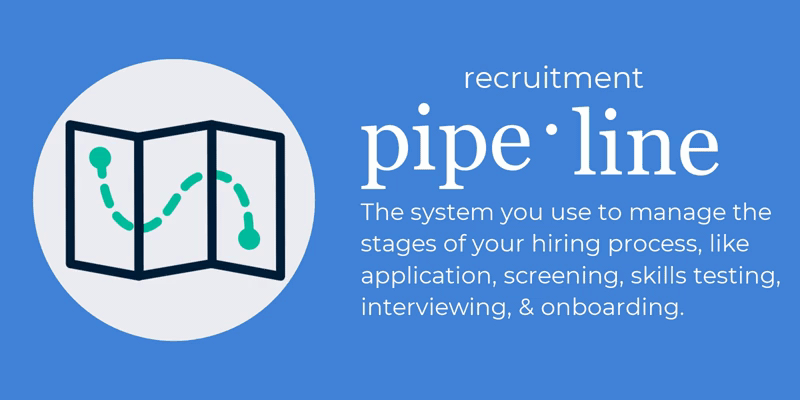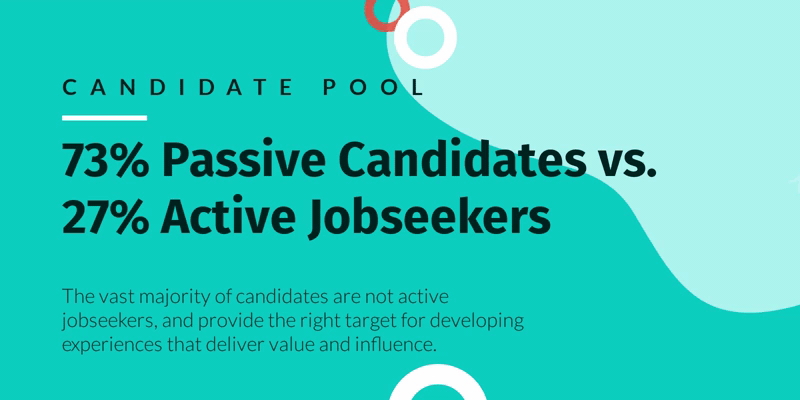Whether you are in healthcare staffing, homecare, skilled trades staffing, or have another recruiting focus, your ability to recruit effectively in a scarce labor market determines whether you’ve got the talent to fuel your growth or a lack of new hires that stops it cold. You need your system - your recruitment pipeline - to give you a competitive edge. Some call it a hiring pipeline or a candidate pipeline, but no matter the label, it’s the way you win and nuture opportunities with new hires.
Missing elements in the recruitment pipeline
Recruitment pipelines come from the same concept as marketing funnels - they are designed to take a large number of people and filter them down to just the right few. The right few to hire, or the right few to sell.
Either way, they are buying into the value of your company. Both ideas have the same problem because they view the prospect only from the viewpoint of the company's needs. In other words, they are all about you.

Marketing funnels came from the world of mass media where ads were blasted out to millions of unqualified buyers, and the funnel would weed out the "unworthy". Recruitment funnels can approach hiring in the same way by collecting hundreds of unqualified or partially qualified resumes and then helping you weed them out. Both treat people like a commodity, which does nothing to help the process of pipeline creating and curating a culture of recruitment.
For the tech-inspired, you might be tempted to believe that just adding some additional artificial intelligence (AI) or some new plug 'n play feature will make your hiring pipeline deliver the goods.
However, there is something much larger missing. It starts with switching your vantage points from the need for an easy-to-use system to seeing how that system is experienced those you want (and need) to hire.
It's not a better applicant tracking system (ATS) that moves your recruiting up a notch - it's a different approach completely.
No candidate wants to jump into a hiring "machine" (recruitment funnel) so that a system can “manage them”, in the same way that no buyer wants to be dumped into an automated funnel to be “sold.” The research bears this out as more than 60% of applicants report having a negative experience in the hiring process. Of course, that’s not the way you start a good (and enduring) relationship with talent that you want to keep.
Here’s what’s missing from your candidate pipeline
- An intentional candidate experience that attracts, engages, and increases hiring momentum
- Early-in-the-process value experiences that allow you to influence the entire prospect pool
- An emphasis on communicating the culture of the company
- A fast candidate transition out of the massive human commodity-based job boards systems into a digital recruiting environment that you control and optimize
Why a hiring paradigm shift is required
The reason you cannot continue to simply rely upon massive job boards as your primary approach to reaching more candidates is simply that it keeps you reliant upon the spot market for the “commodity called labor”. It is difficult to stand out or create real visibility for your company. In a scarce labor market, digital job boards put the greatest and biggest companies on an even footing the smallest and the lowest quality companies - and all the activity simply becomes noise.
Relying on this system as your primary tool is like shopping in the local grocery store when you could actually own part of the farm that produces food. Instead of differentiating your company in the same way that you do with buyers, you are reduced to a race to the bottom in which the only comparison is salary, benefits and job openings.
The solution for this shift is not just to get a better ATS (applicant tracking system), but to begin thinking about your staffing process from the candidate point of view. Your system is designed to serve your needs when what you need is an approach that treats candidates as valued “buyers” whose investment and commitment you want to win.
Enter the Buyer’s Journey for Recruiting
Often called a candidate experience, or a candidate journey map, it should really be viewed as a buyer’s journey, since just like the people who purchase your goods or services, employees are buying into your culture. Choosing not to pursue something else, instead they commit to spend a huge percentage of their time and energy helping your business succeed.
The other benefit to viewing the candidate journey as a buyer’s journey is that it takes us to the same insights that we derive from understanding how buyers engage; we understand their drivers, we nurture their decision process, and we understand that we have to differentiate if we want to win in the hiring market.
The buyer’s journey approach also helps us fill in the big gaps in our recruitment pipeline:
- A process that stays with candidates throughout their experience
- Resources that are intentionally designed to reach candidates early in their process
- The ability to communicate the culture of the company and to differentiate
- Methods for moving candidates out of job boards into digital settings where we can begin delivering value to them before we recruit.
Reaching the Passive Candidate Pool
Most recruiters define the candidate pool as the list (or pile) of resumes or interested candidates. Of course, that is where everyone is competing and the job boards are focused. It’s the red ocean of hiring. And no HR manager or recruiter in the deeply competitive worlds of healthcare, homecare, or skilled trades wants to compete only in the toughest setting.
The challenge is that the majority of candidates are not even looking at the job boards. They are not actively job-hunting, but could be persuaded to look at a company that excites them or aligns with their goals and values more directly. This is the vast majority of potential hires. It’s where personal recruiters focus, but it can also be a pool of candidates that are in your orbit, too.

Developing a passive candidate pool is a powerful way to make your recruitment pipeline more effective and consistent in hiring the right people at the right time. You can only reach this pool by changing your approach and shifting to a buyer’s journey for candidates.
The buyer’s journey for recruitment (or candidate experience) has to go deeper than candidate journey mapping, or recruitment personas to be effective. Using the buyer’s journey approach, you can focus on key drivers, and begin engaging candidates based upon the factors that make them interested in your company, not just a specific job.
Do you need a candidate experience if you have recruiters?
If you rely upon recruiters to meet staffing demands, you may already be focused on social media strategies or other kinds of outreach to engage the passive candidate pool. But, do you also need to build a buyer’s journey out if you have recruiters?
It’s an important question and highlights the actual process of moving someone from mild or no interest to application. It requires education about the values of the company, communication about industry leadership, and showing someone that the company has a culture of opportunity and mutual respect.
Should this entire attraction, education, and inspiration process be left to the precious time of a recruiter? Or, should you develop a circle of influence among passive candidates who are pre-educated and pre-engaged prior to talking with a recruiter? The answer is obvious.
This education process has to be specific to the industry and job types that you need to fill. Recruiting health professionals, entry-level caregivers, or CNAs requires that you create the buyer’s journey and related content that focuses on the interests and needs of these audiences. If you are recruiting skilled tradespeople, then the focus has to be entirely different and may focus on work/life balance, tools or equipment, or even leisure interests. That’s why it has to be a tailored buyer’s journey in order to create influence and interest.
Not only do recruiters become more effective when the candidates have been nurtured in advance, but recruitment pipelines can do their job, too.






